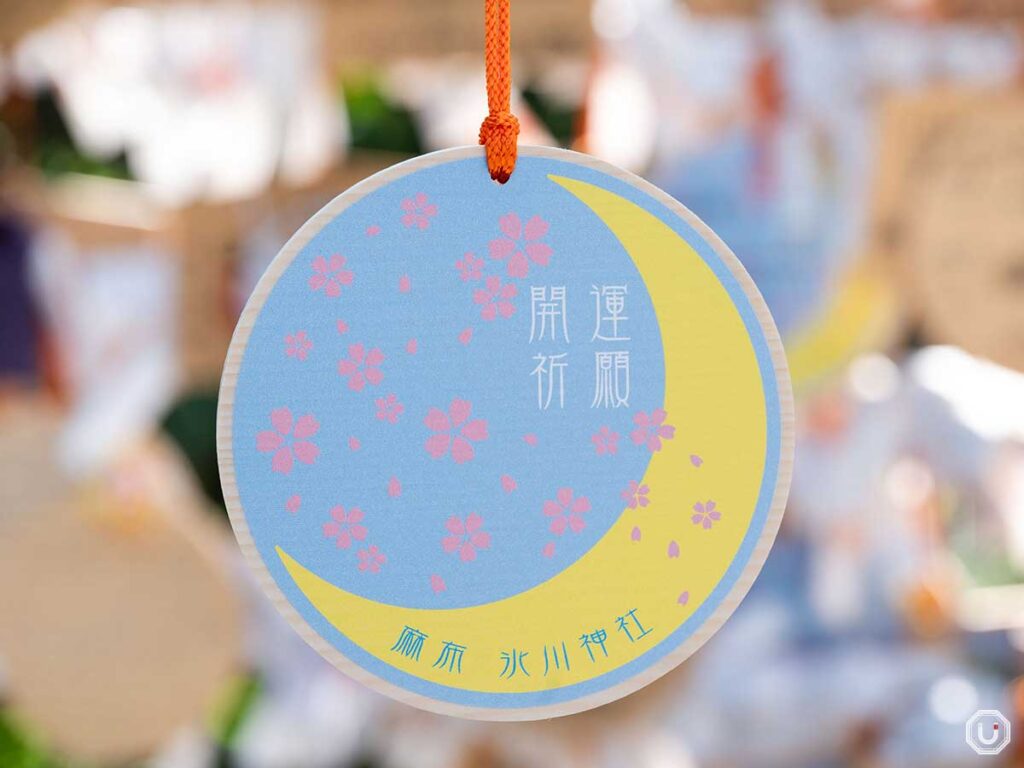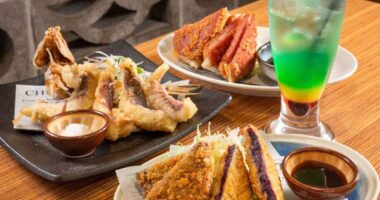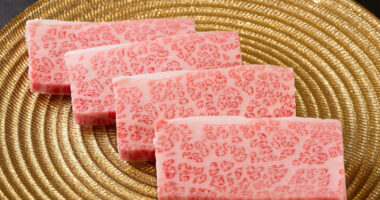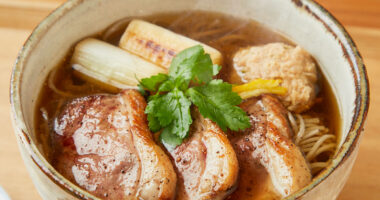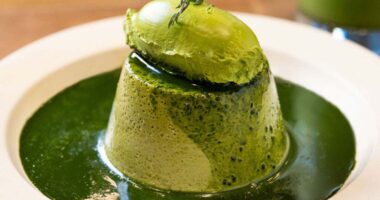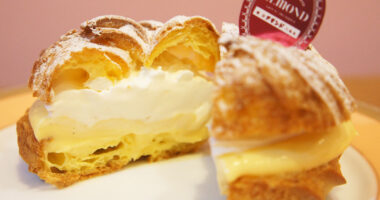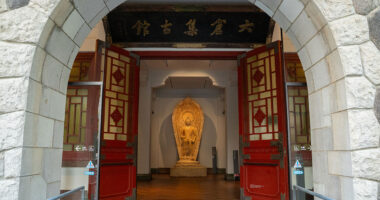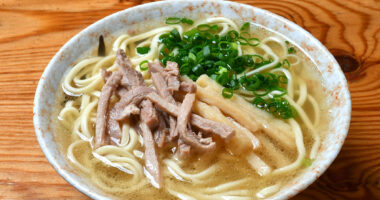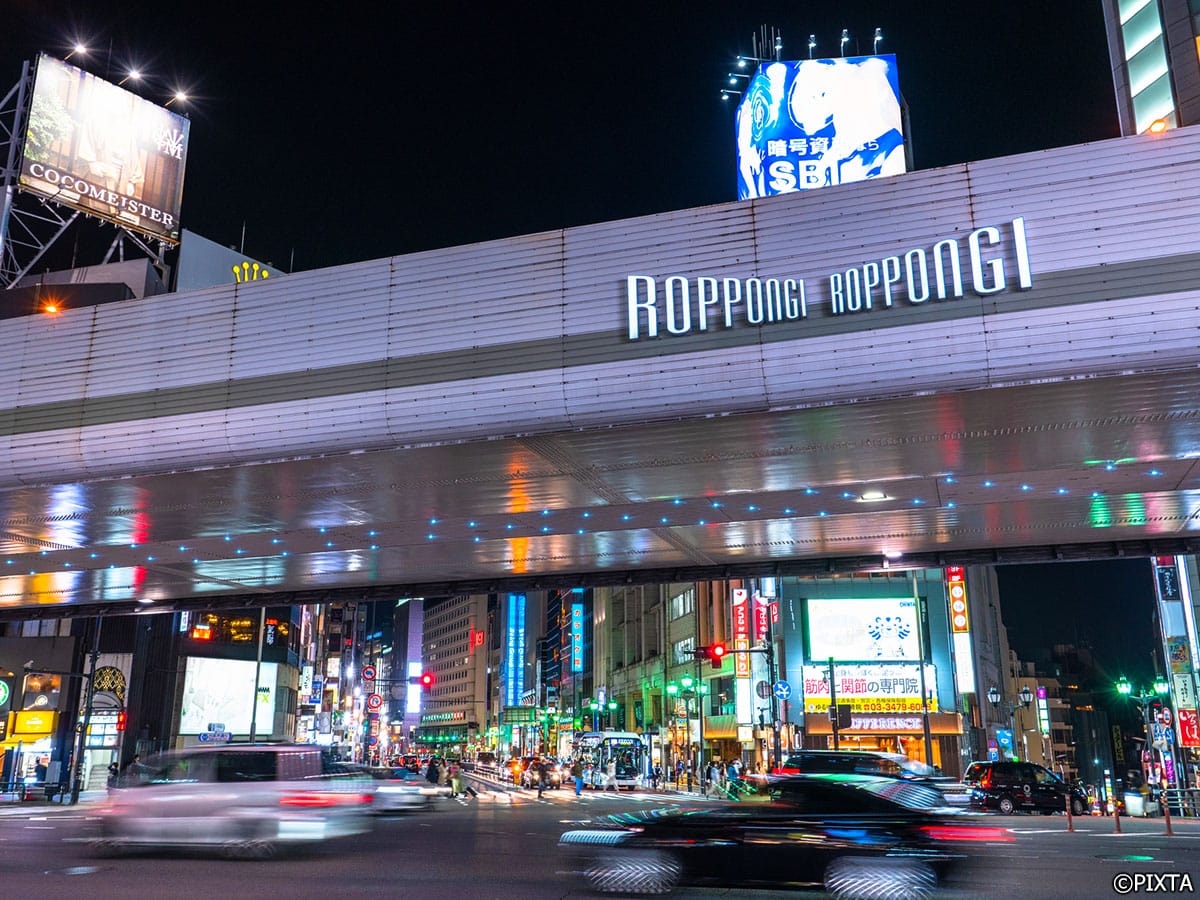In 1991, the popular series Sailor Moon began its manga run and has since been adapted into anime and stage plays, gaining fans worldwide.
Azabu Hikawa Shrine in Tokyo is a special place for Sailor Moon fans. It is known as the model for “Hikawa Shrine” in the series, the home of one of the main characters, Rei Hino.
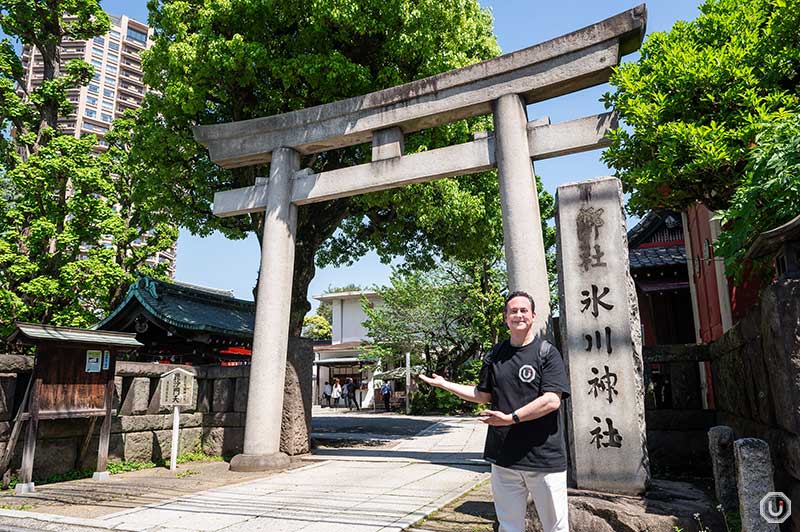
Torii gate at Azabu Hikawa Shrine
Fans will think of Rei Hino from Sailor Moon when they see Azabu Hikawa Shrine’s main building
At Azabu Hikawa Shrine, you can pray for various blessings such as success in competition, business prosperity, academic improvement, and matchmaking.
Before praying, cleanse your hands and rinse your mouth at the water purification pavilion (known in Japanese as chōzuya or chōzusha).
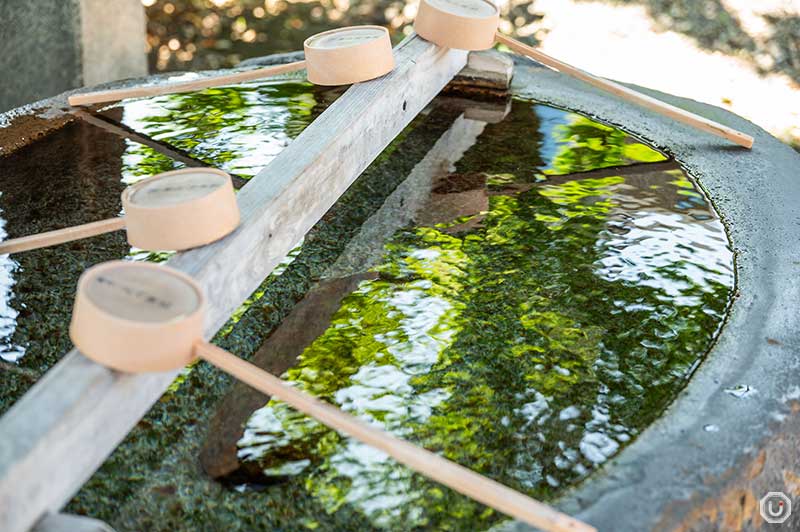
The chōzuya is located immediately to the left after passing through the torii gate
After purification, proceed to the main shrine building. Boldly colored in vermilion, it makes quite an impression.
The red design of the main shrine building evokes the color of Rei Hino’s costume from Sailor Moon which features red prominently.
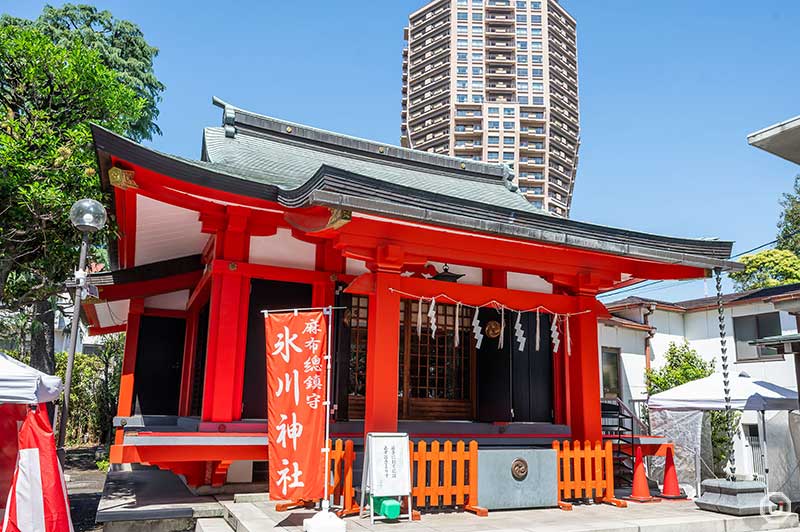
Main building of Azabu Hikawa Shrine
The protocol for paying respects at Azabu Hikawa Shrine follows the common practice of two bows, two claps, and one bow.
Stand in front of the main building, bow deeply twice to the enshrined deities, clap twice, make your prayer, and bow once more.
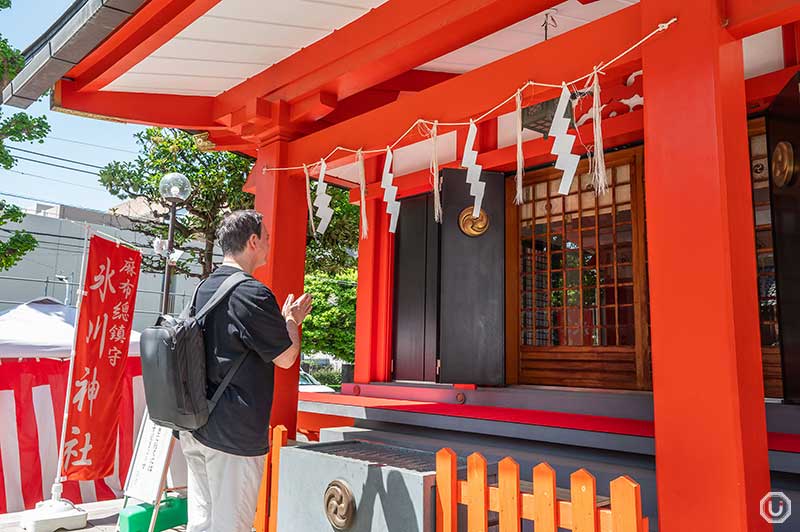
Azabu Hikawa Shrine’s votive tablets are sure to charm Sailor Moon fans
The main shrine building isn’t the only aspect reminiscent of Sailor Moon. The ema (wooden votive tablets) available there feature a crescent moon, a well-known symbol of the series.
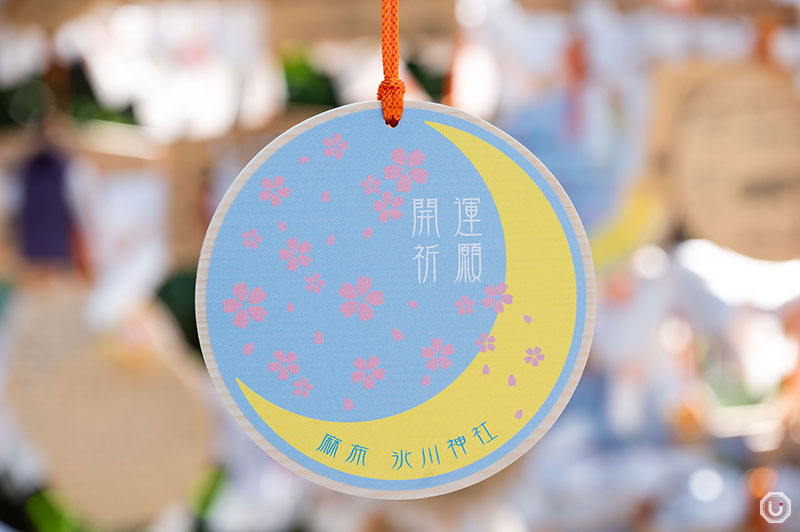
Ema at Azabu Hikawa Shrine 700 JPY
In the past, there were ema with illustrations of Sailor Moon characters, but as of April 2024, the only design available is the one shown in the photo.
Paper fortune slips are available in English at Azabu Hikawa Shrine
Thanks to the influence of Sailor Moon, Azabu Hikawa Shrine attracts visitors from overseas. As a result, the omikuji (paper fortune slips) are available not only in Japanese but also in English.
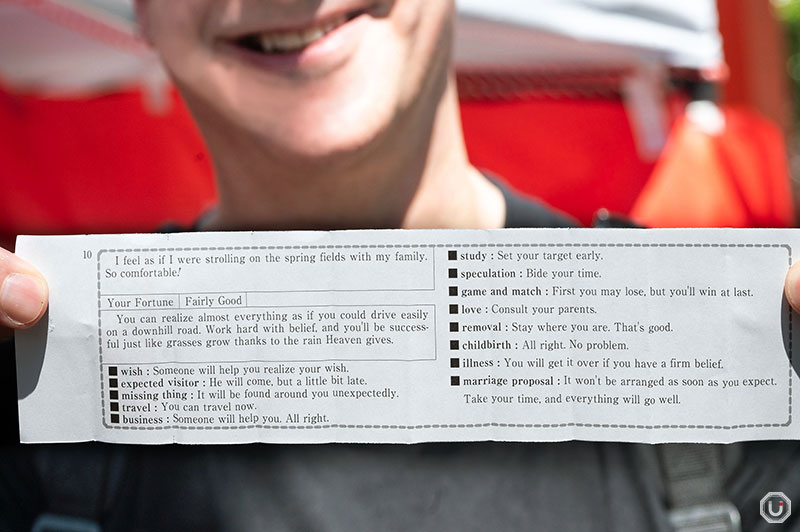
Omikuji written in English at Azabu Hikawa Shrine
The omikuji with English text on them can be found in a box labeled “English & Japanese.”
Omikuji is a unique cultural experience in Japan. At Azabu Hikawa Shrine, you can draw omikuji for 100 JPY per try, so be sure to give it a go.
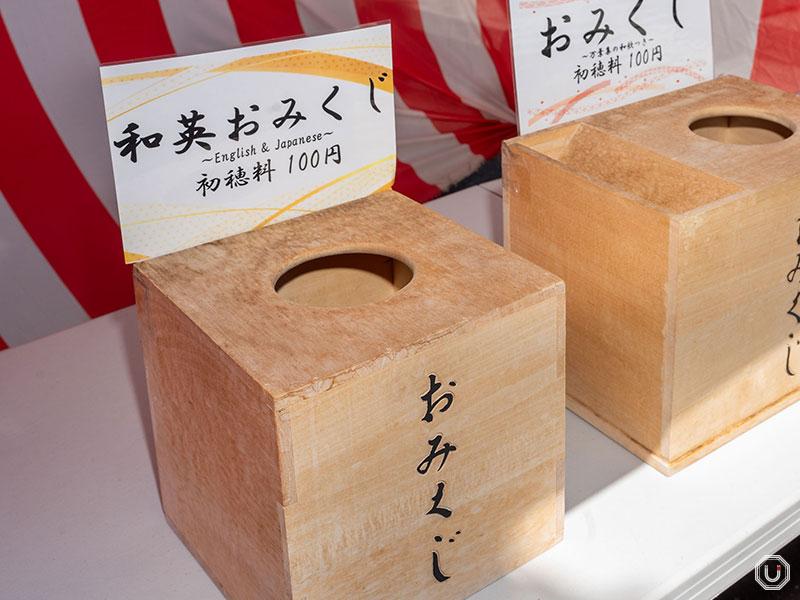
Seasonal goshuin seals at Azabu Hikawa Shrine
Before you leave, why not get a goshuin, a special seal issued by Japanese shrines and temples? These seals serve as a proof of your visit, and their design varies according to the place of worship.
At Azabu Hikawa Shrine, the goshuin have different designs depending on the season and are available for 500 JPY.
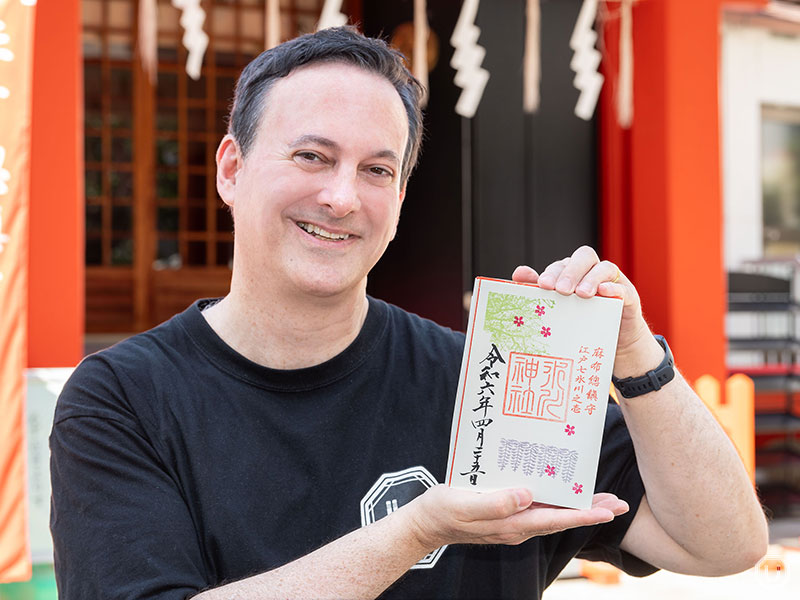
Goshuin at Azabu Hikawa Shrine
As of April 2024, their goshuin featured wisteria flowers, fresh greenery, and cherry blossoms. If you have a goshuinchō (a booklet to collect goshuin), they will inscribe it directly.
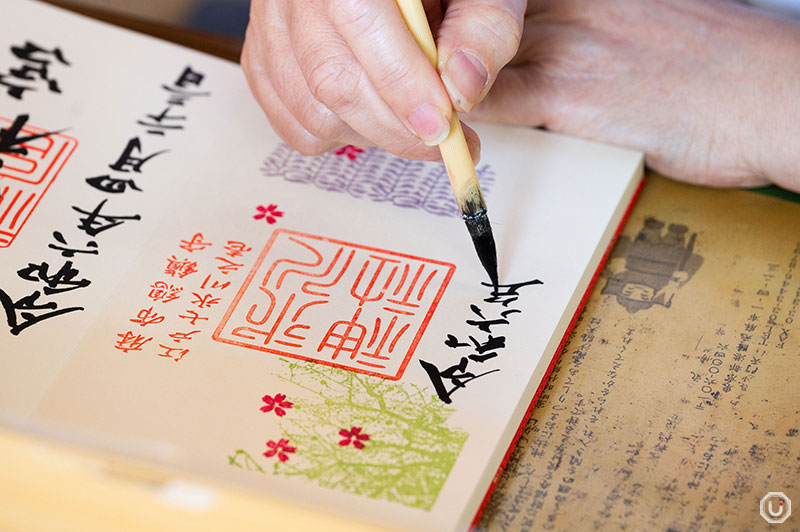
The Grand Azabu Hikawa Mikoshi palanquin, restored after many long years
Azabu Hikawa Shrine continues to be cherished by the local community as the main guardian presence in the Azabu area.
During the Edo period, a grand procession featuring a dashi float carrying the deities enshrined at Azabu Hikawa Shrine would parade through the area as a festival event.
In the Meiji era, the float procession was discontinued and replaced by a large mikoshi palanquin known as the Azabu Hikawa Ōmikoshi (the Grand Azabu Hikawa Mikoshi). After the Pacific War, however, the palanquin sadly disappeared from public view.
Then, in 2021, funds were raised through crowdfunding, and the Grand Azabu Hikawa Mikoshi was finally restored. It is now housed in the mikoshi storehouse within the shrine grounds.
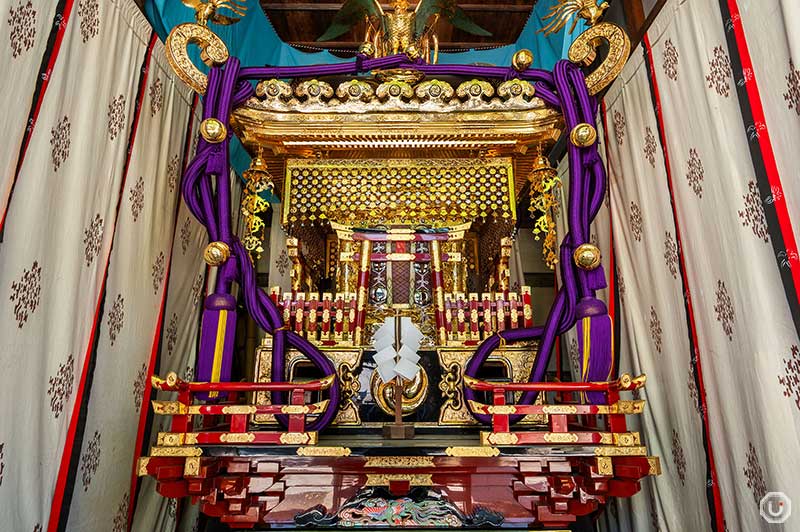
The doors to the mikoshi storehouse are usually closed
The Grand Azabu Hikawa Mikoshi, restored to its full glory, can be seen during the annual Azabu Hikawa Festival held every September.
Its restoration, made possible by the goodwill and enthusiasm of many, is a testament to the community’s affection for Azabu Hikawa Shrine.
Recommended times to visit Azabu Hikawa Shrine
Azabu Hikawa Shrine is accessible on foot from Azabu-juban Station and Hiroo Station.
If you’re a Sailor Moon fan, it’s recommended to walk from Azabu-juban Station because you’ll be able to see manhole covers depicting Sailor Moon and Tuxedo Mask! They’re located near Exit 4 of Azabu-juban Station on the Namboku Line.
Azabu Hikawa Shrine is open for visits from 6:00 AM to 7:00 PM. However, goshuin and ema are only available from 9:00 AM to 4:00 PM.
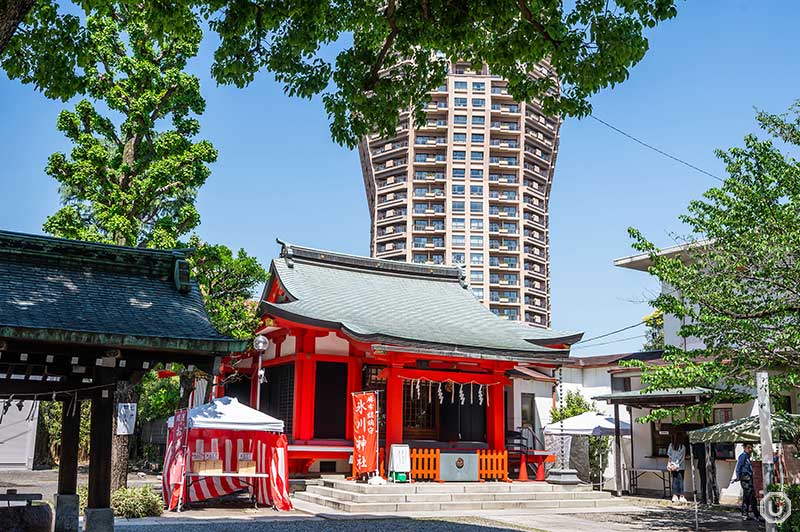
Azabu Hikawa Shrine’s grounds
For Sailor Moon fans, Azabu Hikawa Shrine is a must-stop destination. Be sure to follow proper etiquette during your visit and make it a memorable occasion.
Shrine Information
| Name | 麻布氷川神社 Azabu Hikawa Shrine |
|---|---|
| Address | 1-4-23 Motoazabu, Minato-ku, Tokyo
|
| Access |
Azabu-juban Station 9-minute walk from Azabu-juban Station Exit 4
Hiroo Station 12-minute walk from Hiroo Station Exit 1 |
| Phone number | 03-3446-8796 |
| Visiting Hours | From 6:00 to 19:00 |
| Sacred items | Available from 9:00 to 16:00 |
| Goshuin | Available from 9:00 to 16:00 |
| Omikuji | Available from 9:00 to 16:00 |
| Admission fee | Free |
| Official Website | https://www.azabuhikawa.or.jp/ |
| Other information |
|
※The information in this article is current as of April 2024.
